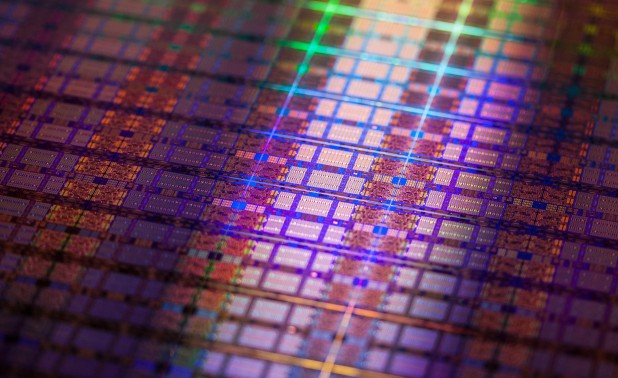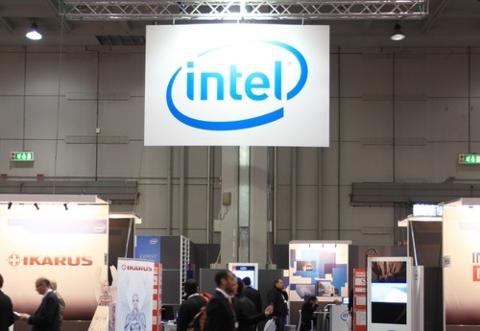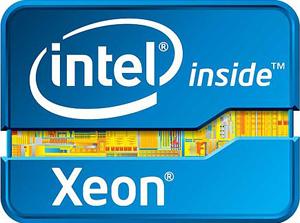 In quietly launching its Itanium microprocessor last week, Intel is trying to convince Hewlett Packard, NEC and others that the 64-bit architecture remains relevant. The new Itanium 9500 (or “Poulsen”) chip consumes 8 percent less power in active mode, and 80 percent less power when idle. The new frequencies of the chip range from 1.73 GHz and a power level of 130 watts, to 2.53 GHz at a power level of 170 watts. Intel said that the number of cores—eight, double that of the Itanium 9300—was matched by a similar 2.4X increase in throughput. The Itanium 9500 also includes up to 54MB total cache, including up to 32MB of last-level cache and support for up to 2TB of low voltage DIMMs. Over 3.1 billion transistors have been used to fabricate it. Intel is touting new features such as Instruction Replay Technology, a RAS technology to reissue errant instructions and prevent system crashes, “end-to-end” error detection, Cache-Safe Technology to prevent cache errors, directory-based cache coherency, a firmware-first machine-check architecture, and demand-based switching of voltage and frequency to minimize power during the rare periods when the chip wasn’t expected to run flat-out. The Itanium (famously dubbed the “Itanic” by journalist Mike Magee) has suffered at the hands of Intel’s own Xeon processor, which has essentially replaced it as the engine of most volume servers. Not a single Itanium processor was used to build the most recent TOP500 list of supercomputers. Even so, Intel claims that systems vendors—including Bull, Hitachi, HP, Inspur and NEC—will build systems based on Itanium. Oracle, SAP, SAS, Sybase, and Temenos have all developed applications that support the new architecture. "NEC has been working with Intel more than 15 years to build enterprise servers based on Intel Itanium processors," Kazuaki Iwamoto, vice president and senior general manager of IT hardware operations unit at NEC, wrote in a statement. "We are pleased to provide our customers with the new enterprise servers based on Intel Itanium processor 9500 series for their highly scalable and mission critical systems." Of course, Oracle is only developing Itanium applications under court order, since Hewlett-Packard convinced a judge that the company has a contractual commitment to keep providing new software architected for the Intel Itanium-based servers designed by HP. Oracle felt otherwise, arguing that the architecture is essentially dead. The Intel Itanium processor 9500 series is available now and is priced from $1,350 to $4,650 in quantities of 1,000 units, Intel said. Image: Intel
In quietly launching its Itanium microprocessor last week, Intel is trying to convince Hewlett Packard, NEC and others that the 64-bit architecture remains relevant. The new Itanium 9500 (or “Poulsen”) chip consumes 8 percent less power in active mode, and 80 percent less power when idle. The new frequencies of the chip range from 1.73 GHz and a power level of 130 watts, to 2.53 GHz at a power level of 170 watts. Intel said that the number of cores—eight, double that of the Itanium 9300—was matched by a similar 2.4X increase in throughput. The Itanium 9500 also includes up to 54MB total cache, including up to 32MB of last-level cache and support for up to 2TB of low voltage DIMMs. Over 3.1 billion transistors have been used to fabricate it. Intel is touting new features such as Instruction Replay Technology, a RAS technology to reissue errant instructions and prevent system crashes, “end-to-end” error detection, Cache-Safe Technology to prevent cache errors, directory-based cache coherency, a firmware-first machine-check architecture, and demand-based switching of voltage and frequency to minimize power during the rare periods when the chip wasn’t expected to run flat-out. The Itanium (famously dubbed the “Itanic” by journalist Mike Magee) has suffered at the hands of Intel’s own Xeon processor, which has essentially replaced it as the engine of most volume servers. Not a single Itanium processor was used to build the most recent TOP500 list of supercomputers. Even so, Intel claims that systems vendors—including Bull, Hitachi, HP, Inspur and NEC—will build systems based on Itanium. Oracle, SAP, SAS, Sybase, and Temenos have all developed applications that support the new architecture. "NEC has been working with Intel more than 15 years to build enterprise servers based on Intel Itanium processors," Kazuaki Iwamoto, vice president and senior general manager of IT hardware operations unit at NEC, wrote in a statement. "We are pleased to provide our customers with the new enterprise servers based on Intel Itanium processor 9500 series for their highly scalable and mission critical systems." Of course, Oracle is only developing Itanium applications under court order, since Hewlett-Packard convinced a judge that the company has a contractual commitment to keep providing new software architected for the Intel Itanium-based servers designed by HP. Oracle felt otherwise, arguing that the architecture is essentially dead. The Intel Itanium processor 9500 series is available now and is priced from $1,350 to $4,650 in quantities of 1,000 units, Intel said. Image: Intel Intel Itanium Still Alive With 'Poulsen'
 In quietly launching its Itanium microprocessor last week, Intel is trying to convince Hewlett Packard, NEC and others that the 64-bit architecture remains relevant. The new Itanium 9500 (or “Poulsen”) chip consumes 8 percent less power in active mode, and 80 percent less power when idle. The new frequencies of the chip range from 1.73 GHz and a power level of 130 watts, to 2.53 GHz at a power level of 170 watts. Intel said that the number of cores—eight, double that of the Itanium 9300—was matched by a similar 2.4X increase in throughput. The Itanium 9500 also includes up to 54MB total cache, including up to 32MB of last-level cache and support for up to 2TB of low voltage DIMMs. Over 3.1 billion transistors have been used to fabricate it. Intel is touting new features such as Instruction Replay Technology, a RAS technology to reissue errant instructions and prevent system crashes, “end-to-end” error detection, Cache-Safe Technology to prevent cache errors, directory-based cache coherency, a firmware-first machine-check architecture, and demand-based switching of voltage and frequency to minimize power during the rare periods when the chip wasn’t expected to run flat-out. The Itanium (famously dubbed the “Itanic” by journalist Mike Magee) has suffered at the hands of Intel’s own Xeon processor, which has essentially replaced it as the engine of most volume servers. Not a single Itanium processor was used to build the most recent TOP500 list of supercomputers. Even so, Intel claims that systems vendors—including Bull, Hitachi, HP, Inspur and NEC—will build systems based on Itanium. Oracle, SAP, SAS, Sybase, and Temenos have all developed applications that support the new architecture. "NEC has been working with Intel more than 15 years to build enterprise servers based on Intel Itanium processors," Kazuaki Iwamoto, vice president and senior general manager of IT hardware operations unit at NEC, wrote in a statement. "We are pleased to provide our customers with the new enterprise servers based on Intel Itanium processor 9500 series for their highly scalable and mission critical systems." Of course, Oracle is only developing Itanium applications under court order, since Hewlett-Packard convinced a judge that the company has a contractual commitment to keep providing new software architected for the Intel Itanium-based servers designed by HP. Oracle felt otherwise, arguing that the architecture is essentially dead. The Intel Itanium processor 9500 series is available now and is priced from $1,350 to $4,650 in quantities of 1,000 units, Intel said. Image: Intel
In quietly launching its Itanium microprocessor last week, Intel is trying to convince Hewlett Packard, NEC and others that the 64-bit architecture remains relevant. The new Itanium 9500 (or “Poulsen”) chip consumes 8 percent less power in active mode, and 80 percent less power when idle. The new frequencies of the chip range from 1.73 GHz and a power level of 130 watts, to 2.53 GHz at a power level of 170 watts. Intel said that the number of cores—eight, double that of the Itanium 9300—was matched by a similar 2.4X increase in throughput. The Itanium 9500 also includes up to 54MB total cache, including up to 32MB of last-level cache and support for up to 2TB of low voltage DIMMs. Over 3.1 billion transistors have been used to fabricate it. Intel is touting new features such as Instruction Replay Technology, a RAS technology to reissue errant instructions and prevent system crashes, “end-to-end” error detection, Cache-Safe Technology to prevent cache errors, directory-based cache coherency, a firmware-first machine-check architecture, and demand-based switching of voltage and frequency to minimize power during the rare periods when the chip wasn’t expected to run flat-out. The Itanium (famously dubbed the “Itanic” by journalist Mike Magee) has suffered at the hands of Intel’s own Xeon processor, which has essentially replaced it as the engine of most volume servers. Not a single Itanium processor was used to build the most recent TOP500 list of supercomputers. Even so, Intel claims that systems vendors—including Bull, Hitachi, HP, Inspur and NEC—will build systems based on Itanium. Oracle, SAP, SAS, Sybase, and Temenos have all developed applications that support the new architecture. "NEC has been working with Intel more than 15 years to build enterprise servers based on Intel Itanium processors," Kazuaki Iwamoto, vice president and senior general manager of IT hardware operations unit at NEC, wrote in a statement. "We are pleased to provide our customers with the new enterprise servers based on Intel Itanium processor 9500 series for their highly scalable and mission critical systems." Of course, Oracle is only developing Itanium applications under court order, since Hewlett-Packard convinced a judge that the company has a contractual commitment to keep providing new software architected for the Intel Itanium-based servers designed by HP. Oracle felt otherwise, arguing that the architecture is essentially dead. The Intel Itanium processor 9500 series is available now and is priced from $1,350 to $4,650 in quantities of 1,000 units, Intel said. Image: Intel 

